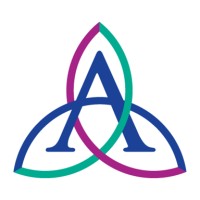
Ascension Company Cyber Security Posture
ascension.orgAscension is one of the nation’s leading non-profit and Catholic health systems, with a Mission of delivering compassionate, personalized care to all with special attention to persons living in poverty and those most vulnerable. In FY2024, Ascension provided $2.1 billion in care of persons living in poverty and other community benefit programs. Across 17 states and the District of Columbia, Ascension’s network encompasses approximately 128,000 associates, 33,000 affiliated providers, 118 wholly owned or consolidated hospitals, and 34 senior living facilities. Additionally, through strategic partnerships, Ascension holds an ownership interest in 16 other hospitals.
Ascension Company Details
ascensionorg
65939 employees
251742.0
62
Hospitals and Health Care
ascension.org
854
ASC_1647020
In-progress
Between 400 and 500
This score is AI-generated and less favored by cyber insurers, who prefer the TPRM score.
 Ascension Global Score
Ascension Global Score.png)

Ascension Company Scoring based on AI Models
| Model Name | Date | Description | Current Score Difference | Score |
|---|---|---|---|---|
| AVERAGE-Industry | 03-12-2025 | This score represents the average cybersecurity rating of companies already scanned within the same industry. It provides a benchmark to compare an individual company's security posture against its industry peers. | N/A | Between 400 and 500 |
Ascension Company Cyber Security News & History
| Entity | Type | Severity | Impact | Seen | Url ID | Details | View |
|---|---|---|---|---|---|---|---|
| Ascension | Breach | 85 | 4 | 09/2021 | ASC124828422 | Link | |
Rankiteo Explanation : Attack with significant impact with customers data leaksDescription: Ascension Michigan notifies some of its patients of a data breach that happened between Oct. 15, 2015, and Sept. 8, 2021. It noticed suspicious activity in its electronic health record and upon investigation found that an unauthorized individual accessed its patient information. The compromised information included full name, date of birth, address(es), email address(es), phone number(s), health insurance information, health insurance identification number and medical records, Social Security numbers. The Ascension Michigan offered free credit and identity theft protection-monitoring services to the affected patients. | |||||||
| Ascension | Breach | 100 | 5 | 5/2025 | ASC220051225 | Link | |
Rankiteo Explanation : Attack threatening the organization's existenceDescription: Ascension, one of the largest private healthcare systems in the United States, experienced a data breach that exposed the personal and healthcare information of over 430,000 patients. The incident, disclosed in April, involved a data theft attack impacting a former business partner in December. Attackers accessed personal health information related to inpatient visits, including physician names, admission and discharge dates, diagnosis and billing codes, medical record numbers, and insurance company names. Personal information such as names, addresses, phone numbers, email addresses, dates of birth, race, gender, and Social Security numbers were also compromised. The breach was linked to a vulnerability in third-party software used by the former business partner, likely part of widespread Clop ransomware attacks. | |||||||
| Ascension | Ransomware | 100 | 7 | 6/2024 | ASC1012070724 | Link | |
Rankiteo Explanation : Attack that could injure or kill peopleDescription: Ascension faced a ransomware attack resulting in severe disruptions across 140 hospitals, implicating patient care and treatment schedules. The recovery was hindered by the need for 'assurance' letters to reconnect systems with suppliers, adding to the operational chaos. The impact extended to canceled appointments and surgeries, and pushed medical staff to revert to manual processes. The organization's swift action towards transparency and reconnection of supplies post-attack mitigated prolonged delays. | |||||||
| Ascension | Ransomware | 100 | 4 | 12/2024 | ASC000032225 | Link | |
Rankiteo Explanation : Attack with significant impact with customers data leaksDescription: Ascension experienced a ransomware attack involving social engineering which resulted in the data of 5,599,699 individuals being affected. An employee was tricked into downloading malware, resulting in a data breach. Although there was no evidence that data was extracted from their Electronic Health Records (EHR) and other clinical systems where complete patient records are securely kept, personal information was involved and notifications to the affected individuals have been initiated. | |||||||
| Ascension | Ransomware | 100 | 4 | 5/2024 | ASC004032225 | Link | |
Rankiteo Explanation : Attack with significant impact with customers data leaksDescription: Ascension faced a cyber breach where a ransomware attack led to unauthorized disclosure of patient personal information. The incident caused class action lawsuits and disruptions in emergency medical services as well as interruptions to the electronic health records system. Identified as conducted by the Russian-speaking group Black Basta, the attack's consequences included services diversion, posing risks to patient care and data security. | |||||||
Ascension Company Subsidiaries

Ascension is one of the nation’s leading non-profit and Catholic health systems, with a Mission of delivering compassionate, personalized care to all with special attention to persons living in poverty and those most vulnerable. In FY2024, Ascension provided $2.1 billion in care of persons living in poverty and other community benefit programs. Across 17 states and the District of Columbia, Ascension’s network encompasses approximately 128,000 associates, 33,000 affiliated providers, 118 wholly owned or consolidated hospitals, and 34 senior living facilities. Additionally, through strategic partnerships, Ascension holds an ownership interest in 16 other hospitals.
Access Data Using Our API

Get company history
.png)
Ascension Cyber Security News
Ascension reports $466M operating loss, citing steady gains since last year's cyberattack
Ascension reported Monday a $466 million loss from operations (-2.3% operating margin) and $195 million of net income for the nine months ...
Ascension cyberattack exposes data from 5.6M people
Data from nearly 5.6 million people was exposed due to a ransomware attack on nonprofit health system Ascension this spring, according to a ...
5.6 Million Patients’ Data Stolen During Ascension’s Ransomware Attack Earlier This Year
Ascension's May cyberattack compromised 5.6 million patients' personal and health information, including Social Security numbers, credit card ...
US hospital operator Ascension says 5.6 million affected in medical data breach in May
Hospital operator Ascension told Maine's state attorney general on Friday that nearly 5.6 million people were affected in a ransomware attack that hit it ...
430K Patients’ Data Exposed in Ascension Breach
Ascension, a healthcare company with 105 hospitals across the United States, recently notified patients of a potential breach of their data.
Nearly 6 million people were impacted by ransomware attack on Ascension Health
Ascension Health has warned almost 6 million people that their information was accessed by hackers in a ransomware attack against the organization earlier this ...
Ascension data breach exposes information of over 430,000 patients
None
Ascension cyberattack exposed medical data of 5.6M customers
A cyberattack on May 8 against healthcare giant Ascension resulted in the medical data of 5.6 million customers being exposed, according to ...
Healthcare group Ascension discloses second cyberattack on patients' data
In May 2024, ransomware crew Black Basta claimed an attack on the systems of Ascension itself, prompting cybersecurity agencies to swiftly issue ...

Ascension Similar Companies
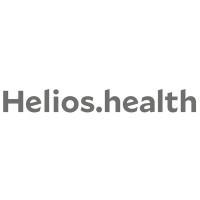
Helios Health GmbH
Based on our extensive expertise and know how we seek to ensure high quality, efficient and patient focused healthcare, locally as well as within an international environment. For this purpose Helios Health was founded in 2017. Helios Health combines Helios Germany (Helios Kliniken) and Helios Spa
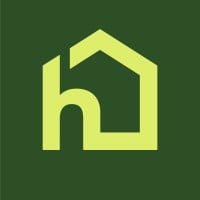
Home Instead UK
Here at Home Instead, our mission is to expand the world's capacity to care. Across the globe we care for thousands of older adults, helping them live well at home for longer. In the UK, we’re reaching more older people than ever with an expansive network of 240 independently owned and operated
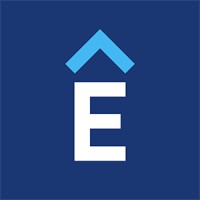
Elevance Health
Fueled by our bold purpose to improve the health of humanity, we are transforming from a traditional health benefits organization into a lifetime trusted health partner. Our nearly 100,000 associates serve more than 118 million people, at every stage of health. We address a full range of needs wi
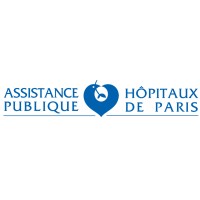
Greater Paris University Hospitals - AP-HP
AP-HP (Greater Paris University Hospitals) is a European world-renowned university hospital. Its 39 hospitals treat 8 million people every year: in consultation, emergency, during scheduled or home hospitalizations. The AP-HP provides a public health service for everyone, 24 hours a day. This missi

St Peters
With nearly 12,500 employees in more than 165 locations, St. Peter's Health Partners provides high-quality, compassionate care to thousands of people every day across the greater Capital Region. St. Peter's Health Partners was created in 2011 through the merger of Seton Health, Northeast Health
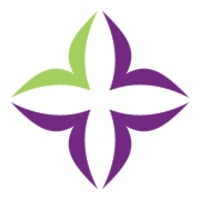
Trinity Health
Trinity Health is one of the largest not-for-profit, Catholic health care systems in the nation. It is a family of 123,000 colleagues and nearly 27,000 physicians and clinicians caring for diverse communities across 26 states. Nationally recognized for care and experience, the Trinity Health system

Frequently Asked Questions (FAQ) on Cybersecurity Incidents
Ascension CyberSecurity History Information
Total Incidents: According to Rankiteo, Ascension has faced 5 incidents in the past.
Incident Types: The types of cybersecurity incidents that have occurred include ['Ransomware', 'Breach'].
Total Financial Loss: The total financial loss from these incidents is estimated to be {total_financial_loss}.
Cybersecurity Posture: The company's overall cybersecurity posture is described as Ascension is one of the nation’s leading non-profit and Catholic health systems, with a Mission of delivering compassionate, personalized care to all with special attention to persons living in poverty and those most vulnerable. In FY2024, Ascension provided $2.1 billion in care of persons living in poverty and other community benefit programs. Across 17 states and the District of Columbia, Ascension’s network encompasses approximately 128,000 associates, 33,000 affiliated providers, 118 wholly owned or consolidated hospitals, and 34 senior living facilities. Additionally, through strategic partnerships, Ascension holds an ownership interest in 16 other hospitals..
Detection and Response: The company detects and responds to cybersecurity incidents through {description_of_detection_and_response_process}.
Incident Details
Incident 1: Ransomware Attack
Title: {Incident_Title}
Description: {Brief_description_of_the_incident}
Date Detected: {Detection_Date}
Date Publicly Disclosed: {Disclosure_Date}
Date Resolved: {Resolution_Date}
Type: {Type_of_Attack}
Attack Vector: {Attack_Vector}
Vulnerability Exploited: {Vulnerability}
Threat Actor: {Threat_Actor}
Motivation: {Motivation}
Incident 2: Data Breach
Title: {Incident_Title}
Description: {Brief_description_of_the_incident}
Date Detected: {Detection_Date}
Date Publicly Disclosed: {Disclosure_Date}
Date Resolved: {Resolution_Date}
Type: {Type_of_Attack}
Attack Vector: {Attack_Vector}
Vulnerability Exploited: {Vulnerability}
Threat Actor: {Threat_Actor}
Motivation: {Motivation}
Common Attack Types: The most common types of attacks the company has faced are ['Breach', 'Ransomware'].
Identification of Attack Vectors: The company identifies the attack vectors used in incidents through {description_of_identification_process}.
Impact of the Incidents
Incident 1: Ransomware Attack
Financial Loss: {Financial_Loss}
Data Compromised: {Data_Compromised}
Systems Affected: {Systems_Affected}
Downtime: {Downtime}
Operational Impact: {Operational_Impact}
Conversion Rate Impact: {Conversion_Rate_Impact}
Revenue Loss: {Revenue_Loss}
Customer Complaints: {Customer_Complaints}
Brand Reputation Impact: {Brand_Reputation_Impact}
Legal Liabilities: {Legal_Liabilities}
Identity Theft Risk: {Identity_Theft_Risk}
Payment Information Risk: {Payment_Information_Risk}
Incident 2: Data Breach
Financial Loss: {Financial_Loss}
Data Compromised: {Data_Compromised}
Systems Affected: {Systems_Affected}
Downtime: {Downtime}
Operational Impact: {Operational_Impact}
Conversion Rate Impact: {Conversion_Rate_Impact}
Revenue Loss: {Revenue_Loss}
Customer Complaints: {Customer_Complaints}
Brand Reputation Impact: {Brand_Reputation_Impact}
Legal Liabilities: {Legal_Liabilities}
Identity Theft Risk: {Identity_Theft_Risk}
Payment Information Risk: {Payment_Information_Risk}
Average Financial Loss: The average financial loss per incident is {average_financial_loss}.
Commonly Compromised Data Types: The types of data most commonly compromised in incidents are {list_of_commonly_compromised_data_types}.
Incident 1: Ransomware Attack
Entity Name: {Entity_Name}
Entity Type: {Entity_Type}
Industry: {Industry}
Location: {Location}
Size: {Size}
Customers Affected: {Customers_Affected}
Incident 2: Data Breach
Entity Name: {Entity_Name}
Entity Type: {Entity_Type}
Industry: {Industry}
Location: {Location}
Size: {Size}
Customers Affected: {Customers_Affected}
Response to the Incidents
Incident 1: Ransomware Attack
Incident Response Plan Activated: {Yes/No}
Third Party Assistance: {Yes/No}
Law Enforcement Notified: {Yes/No}
Containment Measures: {Containment_Measures}
Remediation Measures: {Remediation_Measures}
Recovery Measures: {Recovery_Measures}
Communication Strategy: {Communication_Strategy}
Adaptive Behavioral WAF: {Adaptive_Behavioral_WAF}
On-Demand Scrubbing Services: {On_Demand_Scrubbing_Services}
Network Segmentation: {Network_Segmentation}
Enhanced Monitoring: {Enhanced_Monitoring}
Incident 2: Data Breach
Incident Response Plan Activated: {Yes/No}
Third Party Assistance: {Yes/No}
Law Enforcement Notified: {Yes/No}
Containment Measures: {Containment_Measures}
Remediation Measures: {Remediation_Measures}
Recovery Measures: {Recovery_Measures}
Communication Strategy: {Communication_Strategy}
Adaptive Behavioral WAF: {Adaptive_Behavioral_WAF}
On-Demand Scrubbing Services: {On_Demand_Scrubbing_Services}
Network Segmentation: {Network_Segmentation}
Enhanced Monitoring: {Enhanced_Monitoring}
Incident Response Plan: The company's incident response plan is described as {description_of_incident_response_plan}.
Third-Party Assistance: The company involves third-party assistance in incident response through {description_of_third_party_involvement}.
Data Breach Information
Incident 2: Data Breach
Type of Data Compromised: {Type_of_Data}
Number of Records Exposed: {Number_of_Records}
Sensitivity of Data: {Sensitivity_of_Data}
Data Exfiltration: {Yes/No}
Data Encryption: {Yes/No}
File Types Exposed: {File_Types}
Personally Identifiable Information: {Yes/No}
Prevention of Data Exfiltration: The company takes the following measures to prevent data exfiltration: {description_of_prevention_measures}.
Handling of PII Incidents: The company handles incidents involving personally identifiable information (PII) through {description_of_handling_process}.
Ransomware Information
Incident 1: Ransomware Attack
Ransom Demanded: {Ransom_Amount}
Ransom Paid: {Ransom_Paid}
Ransomware Strain: {Ransomware_Strain}
Data Encryption: {Yes/No}
Data Exfiltration: {Yes/No}
Ransom Payment Policy: The company's policy on paying ransoms in ransomware incidents is described as {description_of_ransom_payment_policy}.
Data Recovery from Ransomware: The company recovers data encrypted by ransomware through {description_of_data_recovery_process}.
Regulatory Compliance
Incident 1: Ransomware Attack
Regulations Violated: {Regulations_Violated}
Fines Imposed: {Fines_Imposed}
Legal Actions: {Legal_Actions}
Regulatory Notifications: {Regulatory_Notifications}
Incident 2: Data Breach
Regulations Violated: {Regulations_Violated}
Fines Imposed: {Fines_Imposed}
Legal Actions: {Legal_Actions}
Regulatory Notifications: {Regulatory_Notifications}
Regulatory Frameworks: The company complies with the following regulatory frameworks regarding cybersecurity: {list_of_regulatory_frameworks}.
Ensuring Regulatory Compliance: The company ensures compliance with regulatory requirements through {description_of_compliance_measures}.
Lessons Learned and Recommendations
Incident 1: Ransomware Attack
Lessons Learned: {Lessons_Learned}
Incident 2: Data Breach
Lessons Learned: {Lessons_Learned}
Incident 1: Ransomware Attack
Recommendations: {Recommendations}
Incident 2: Data Breach
Recommendations: {Recommendations}
Key Lessons Learned: The key lessons learned from past incidents are {list_of_key_lessons_learned}.
Implemented Recommendations: The company has implemented the following recommendations to improve cybersecurity: {list_of_implemented_recommendations}.
References
Additional Resources: Stakeholders can find additional resources on cybersecurity best practices at {list_of_additional_resources}.
Investigation Status
Incident 1: Ransomware Attack
Investigation Status: {Investigation_Status}
Incident 2: Data Breach
Investigation Status: {Investigation_Status}
Communication of Investigation Status: The company communicates the status of incident investigations to stakeholders through {description_of_communication_process}.
Stakeholder and Customer Advisories
Incident 1: Ransomware Attack
Stakeholder Advisories: {Stakeholder_Advisories}
Customer Advisories: {Customer_Advisories}
Incident 2: Data Breach
Stakeholder Advisories: {Stakeholder_Advisories}
Customer Advisories: {Customer_Advisories}
Advisories Provided: The company provides the following advisories to stakeholders and customers following an incident: {description_of_advisories_provided}.
Initial Access Broker
Incident 1: Ransomware Attack
Entry Point: {Entry_Point}
Reconnaissance Period: {Reconnaissance_Period}
Backdoors Established: {Backdoors_Established}
High Value Targets: {High_Value_Targets}
Data Sold on Dark Web: {Yes/No}
Incident 2: Data Breach
Entry Point: {Entry_Point}
Reconnaissance Period: {Reconnaissance_Period}
Backdoors Established: {Backdoors_Established}
High Value Targets: {High_Value_Targets}
Data Sold on Dark Web: {Yes/No}
Monitoring and Mitigation of Initial Access Brokers: The company monitors and mitigates the activities of initial access brokers through {description_of_monitoring_and_mitigation_measures}.
Post-Incident Analysis
Incident 1: Ransomware Attack
Root Causes: {Root_Causes}
Corrective Actions: {Corrective_Actions}
Incident 2: Data Breach
Root Causes: {Root_Causes}
Corrective Actions: {Corrective_Actions}
Post-Incident Analysis Process: The company's process for conducting post-incident analysis is described as {description_of_post_incident_analysis_process}.
Corrective Actions Taken: The company has taken the following corrective actions based on post-incident analysis: {list_of_corrective_actions_taken}.
Additional Questions
General Information
Ransom Payment History: The company has {paid/not_paid} ransoms in the past.
Last Ransom Demanded: The amount of the last ransom demanded was {last_ransom_amount}.
Last Attacking Group: The attacking group in the last incident was {last_attacking_group}.
Incident Details
Most Recent Incident Detected: The most recent incident detected was on {most_recent_incident_detected_date}.
Most Recent Incident Publicly Disclosed: The most recent incident publicly disclosed was on {most_recent_incident_publicly_disclosed_date}.
Most Recent Incident Resolved: The most recent incident resolved was on {most_recent_incident_resolved_date}.
Impact of the Incidents
Highest Financial Loss: The highest financial loss from an incident was {highest_financial_loss}.
Most Significant Data Compromised: The most significant data compromised in an incident was {most_significant_data_compromised}.
Most Significant System Affected: The most significant system affected in an incident was {most_significant_system_affected}.
Response to the Incidents
Third-Party Assistance in Most Recent Incident: The third-party assistance involved in the most recent incident was {third_party_assistance_in_most_recent_incident}.
Containment Measures in Most Recent Incident: The containment measures taken in the most recent incident were {containment_measures_in_most_recent_incident}.
Data Breach Information
Most Sensitive Data Compromised: The most sensitive data compromised in a breach was {most_sensitive_data_compromised}.
Number of Records Exposed: The number of records exposed in the most significant breach was {number_of_records_exposed}.
Ransomware Information
Highest Ransom Demanded: The highest ransom demanded in a ransomware incident was {highest_ransom_demanded}.
Highest Ransom Paid: The highest ransom paid in a ransomware incident was {highest_ransom_paid}.
Regulatory Compliance
Highest Fine Imposed: The highest fine imposed for a regulatory violation was {highest_fine_imposed}.
Most Significant Legal Action: The most significant legal action taken for a regulatory violation was {most_significant_legal_action}.
Lessons Learned and Recommendations
Most Significant Lesson Learned: The most significant lesson learned from past incidents was {most_significant_lesson_learned}.
Most Significant Recommendation Implemented: The most significant recommendation implemented to improve cybersecurity was {most_significant_recommendation_implemented}.
References
Most Recent Source: The most recent source of information about an incident is {most_recent_source}.
Most Recent URL for Additional Resources: The most recent URL for additional resources on cybersecurity best practices is {most_recent_url}.
Investigation Status
Current Status of Most Recent Investigation: The current status of the most recent investigation is {current_status_of_most_recent_investigation}.
Stakeholder and Customer Advisories
Most Recent Stakeholder Advisory: The most recent stakeholder advisory issued was {most_recent_stakeholder_advisory}.
Most Recent Customer Advisory: The most recent customer advisory issued was {most_recent_customer_advisory}.
Initial Access Broker
Most Recent Entry Point: The most recent entry point used by an initial access broker was {most_recent_entry_point}.
Most Recent Reconnaissance Period: The most recent reconnaissance period for an incident was {most_recent_reconnaissance_period}.
Post-Incident Analysis
Most Significant Root Cause: The most significant root cause identified in post-incident analysis was {most_significant_root_cause}.
Most Significant Corrective Action: The most significant corrective action taken based on post-incident analysis was {most_significant_corrective_action}.
What Do We Measure?
















Every week, Rankiteo analyzes billions of signals to give organizations a sharper, faster view of emerging risks. With deeper, more actionable intelligence at their fingertips, security teams can outpace threat actors, respond instantly to Zero-Day attacks, and dramatically shrink their risk exposure window.
These are some of the factors we use to calculate the overall score:
Identify exposed access points, detect misconfigured SSL certificates, and uncover vulnerabilities across the network infrastructure.
Gain visibility into the software components used within an organization to detect vulnerabilities, manage risk, and ensure supply chain security.
Monitor and manage all IT assets and their configurations to ensure accurate, real-time visibility across the company's technology environment.
Leverage real-time insights on active threats, malware campaigns, and emerging vulnerabilities to proactively defend against evolving cyberattacks.




